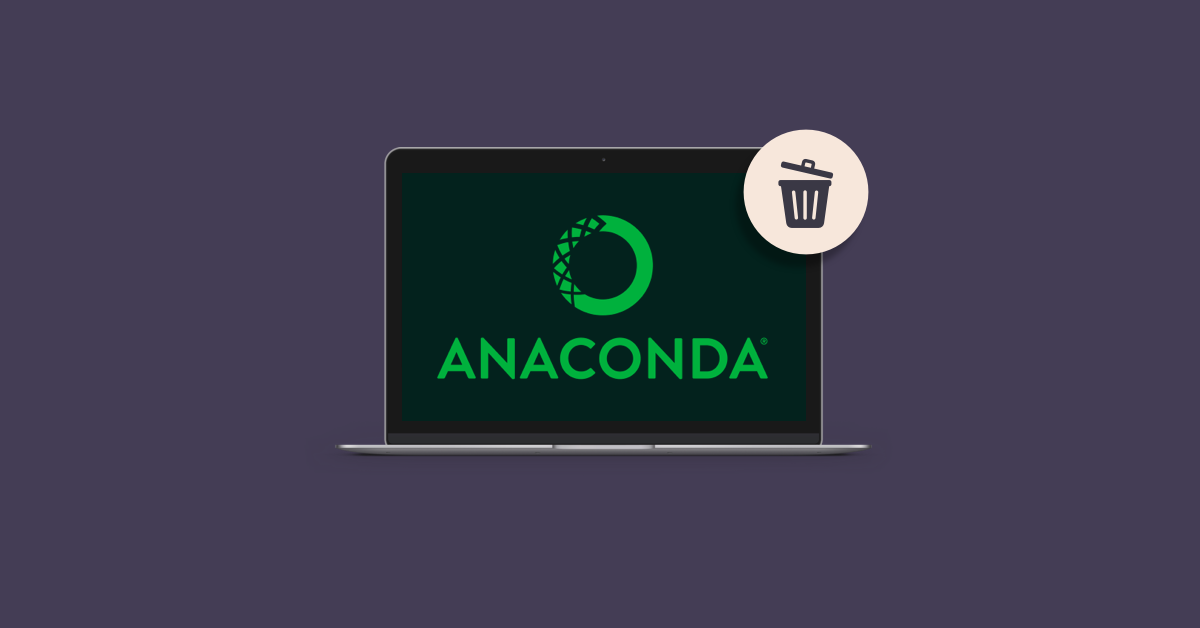

- #ANACONDA FOR MAC BOOK HOW TO#
- #ANACONDA FOR MAC BOOK INSTALL#
- #ANACONDA FOR MAC BOOK SOFTWARE#
- #ANACONDA FOR MAC BOOK DOWNLOAD#
- #ANACONDA FOR MAC BOOK FREE#
Skip to the bottom for a note about TensorFlow (if TensorFlow is what you care about) or feel free to check out some of our other posts, mostly about computer vision, here.

Step 6: In your Terminal, type jupyter notebook and hit Return. You want to stop your kernel from repeatedly dying. Fix the Jupyter kernel issueĪt this point, Python and Jupyter should be installed. If that doesn't work, then head here and follow the instructions.
#ANACONDA FOR MAC BOOK INSTALL#
Step 5: If you've installed Python but had trouble installing Jupyter, then go to your Terminal and type pip3 install jupyter. Once you're done, head back up to Step 3.
#ANACONDA FOR MAC BOOK DOWNLOAD#
Note that the normal Anaconda download won't work here, as the M1 computer isn't 64-bit. You'll need to login with your Apple ID and follow the instructions. Step 4: You can install Python by going to XCode Command Line Tools. New Mac operating systems should have it already installed, so if you're finding an error, make sure that there isn't a typo somewhere. If you get a command not found: python3 error, this means that you need to install Python.If you see something similar Python 3.X.Y, with the > at the bottom, then great! That means Python 3 is installed.The Python interpreter open in the Terminal. In the terminal, type python3 and hit Return. Step 3: Let's check if Python has been installed. If, instead, your Terminal says command not found: jupyter then you need to see if Python is even installed before you can install Jupyter.The traditional Jupyter interface, with several folders visible. (It's OK if you get a kernel error, we'll figure that out later!) Skip to step 6.Ī screenshot of a Terminal with Jupyter successfully running. If your Terminal looks like the image directly below and a Jupyter interface opens in your browser like the the second image below, then Jupyter is installed.Step 2: In your Terminal, type jupyter notebook and hit Return. Step 1: Open up your Terminal by holding Command and hitting Space, which should bring up your Spotlight Search. If you know with certainty that you have Jupyter downloaded, you can skip down here.) Check if Python & Jupyter are already installed. (We'll assume you don't know if you have Jupyter on your computer yet.
#ANACONDA FOR MAC BOOK HOW TO#
In this blog, we'll walk through how to get Jupyter functional on your M1 computer - starting with the download step and ending with a fully operational Jupyter notebook. Pressing 'Enter' (or entering any other command) will terminate the script./ 1× Prepping to run a Jupyter notebook on my new MacBook Run a Jupyter notebook on Apple M1 MacĮither you're opening a notebook right now and your kernel instantly dies, or you haven't been able to get a Jupyter notebook operational yet. To run Molywood, provide the name of the input file, e.g. Now you can run molywood just typing molywood in your terminal. Run the Python Package Installer to install manually the last dependency: As VMD is an external software, macOS will ask you for permissions in order to install it.You must agree to the terms of the license:
#ANACONDA FOR MAC BOOK SOFTWARE#

Open your terminal and go to the folder where your environment.yml file has been downloaded and follow the next steps: The structure of this file is as follows:ĭownload the YAML file environment.yml to your computer clicking the button below:ĭownload environment.yml Create conda environment Environment creation If it doesn't work, the path must be exported:Įxport PATH=/home/USER/anaconda3/bin:$PATHįor creating a new conda environment, we need to download a YAML file with all the dependencies that must be installed into our environment.


 0 kommentar(er)
0 kommentar(er)
